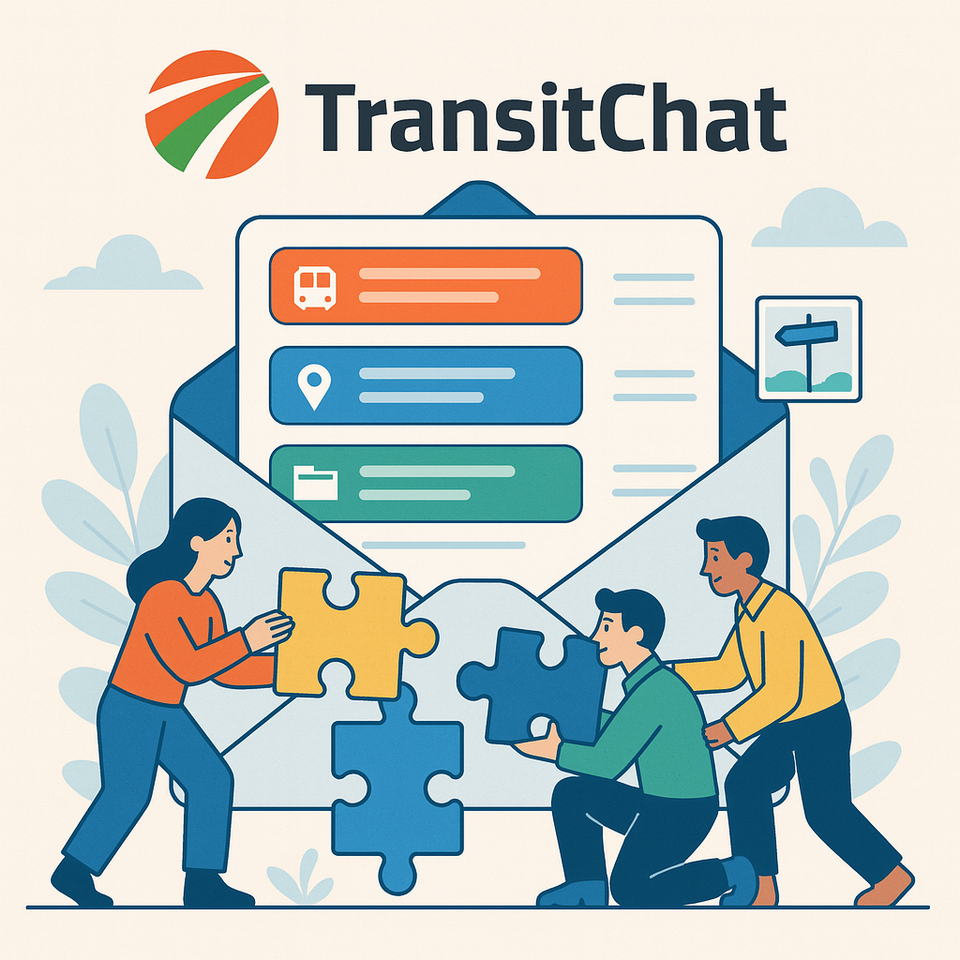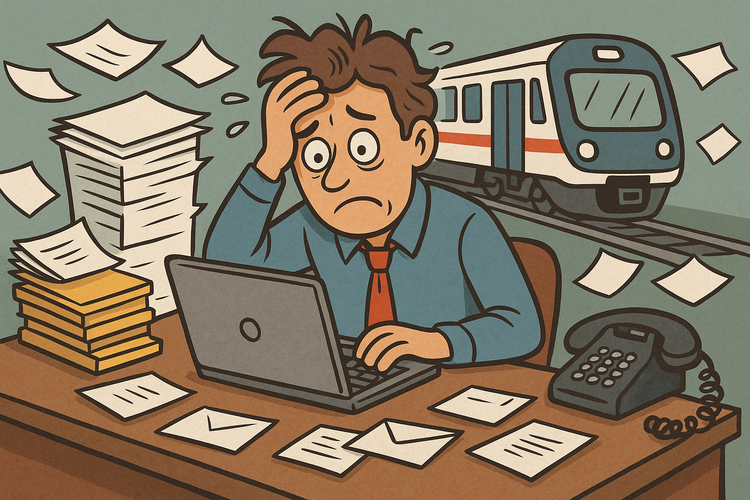The Shared Transit Inbox is the Key to Operations Efficiency

Imagine your transit agency is building a giant puzzle.
Planning is working on the corners. Customer service is handling the edges. Maintenance has all the weird-shaped pieces. And everyone’s doing a great job — just on different tables.
No one can see the full picture.
This exactly what it is like to manage your tasks and teams with emails and meetings. Duplicated work, isolated project and goals and the proverbial "pushing of tables together" creates a cycle of inefficiency that plagues your schedule changes and does not add to your missing documentation.
It can feel like your team is working efficiently and it is the other teams that are dropping the ball, but the problem is perceived as an "us vs them" mentality contributing to tribal mentality creating conflict. Poor coordination and communication in real time across departments burns time for every team.
Even something as small as checking your email and hitting reply all is creating 3 minutes of work for everyone that you sent that to. Having 5 people read one email equates to 15 minutes of time. Duplicate that over 4 emails that is 1 hour of your staff's time that you will NEVER get back.
Even if you are doing a good job of organizing your emails, no one is able to take advantage of your hard work in tagging and sorting your inbox. Having one space for all of your messages and files that are tagged with locations, routes, stops and events is the key difference between communication and documentation.
🚦What Gets Lost When Everyone's Working Alone
Let’s talk about what actually happens on a day-to-day basis:
- Five riders report the same missing stop sign — but the emails go to five different people.
- Someone forwards a customer complaint to a department, but no one replies.
- A planner shares a draft detour map via email, and a week later, no one can find it.
- A photo of a broken bench is sent from the field, but gets stuck in someone's personal inbox.
No one’s doing anything wrong. But between the work orders, bus stop id's, customer contact info, photos and files used to solve this problem email was not designed for a shared catalogue of assignments, communications that turn into federal reporting that can easily be passed off to the next team in the chain of command.
We understand the importance of getting something communicated as quickly and easily as possible in transit. That's why its important for both low and high tech staff to be able to adopt and adapt to new workflows. The way that we want to stand out is creating a view that the Call Center and the CEO have of your operations. This kind of line of sight into your agencies operations is how we plan on reducing workload and communication time to resolve issues that are properly documented.
📨 A Shared Inbox Isn’t Just an Inbox — It’s a Control Center
TransitChat gives your team one central place to handle the work — whether it’s a complaint, a file, a photo, or a request.
Here’s how it works:
- You forward any email (or email chain) to inbox@transit.chat.
- The conversation shows up in a shared space for your team.
- It gets tagged with routes, stops, departments, or locations.
- You can assign it, add comments, upload files, or just keep it for record.
It’s like CC’ing the whole team — without flooding everyone’s inbox.
📎 Use Cases TransitChat Handles with Ease
TransitChat helps your team:
✅ Group related issues
✅ Assign and track follow-ups
✅ Store decisions and attachments with context
✅ Get visibility across departments
No more asking “Who’s handling this?”
No more digging through old emails.
No more missed follow-ups.
Just one shared space, one clear system, and one connected team.
Next Up: What’s In It for You?
In the next post, we’ll show how TransitChat makes your specific job easier — whether you're answering rider emails, making service plans, or running the agency.
Stay tuned. It only gets better from here.


Member discussion